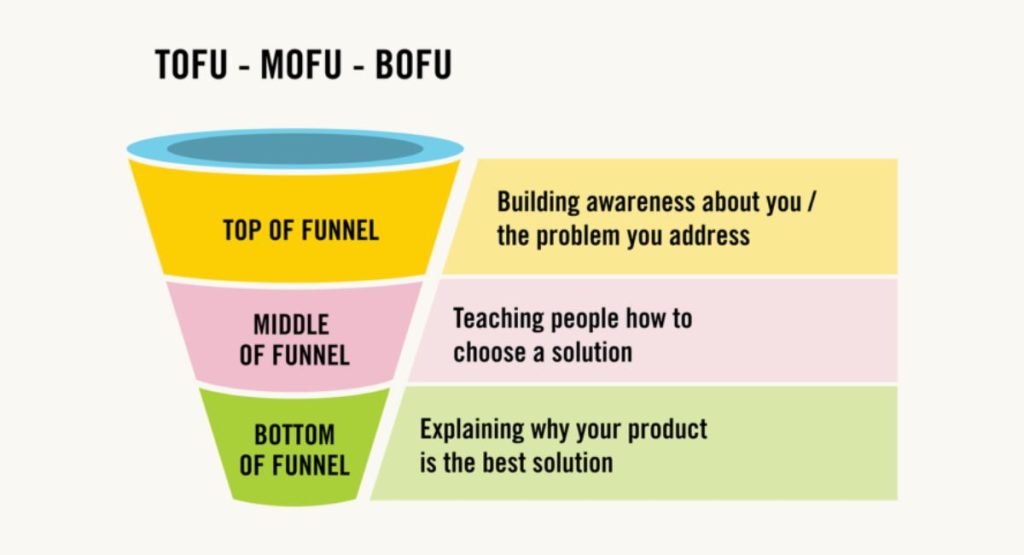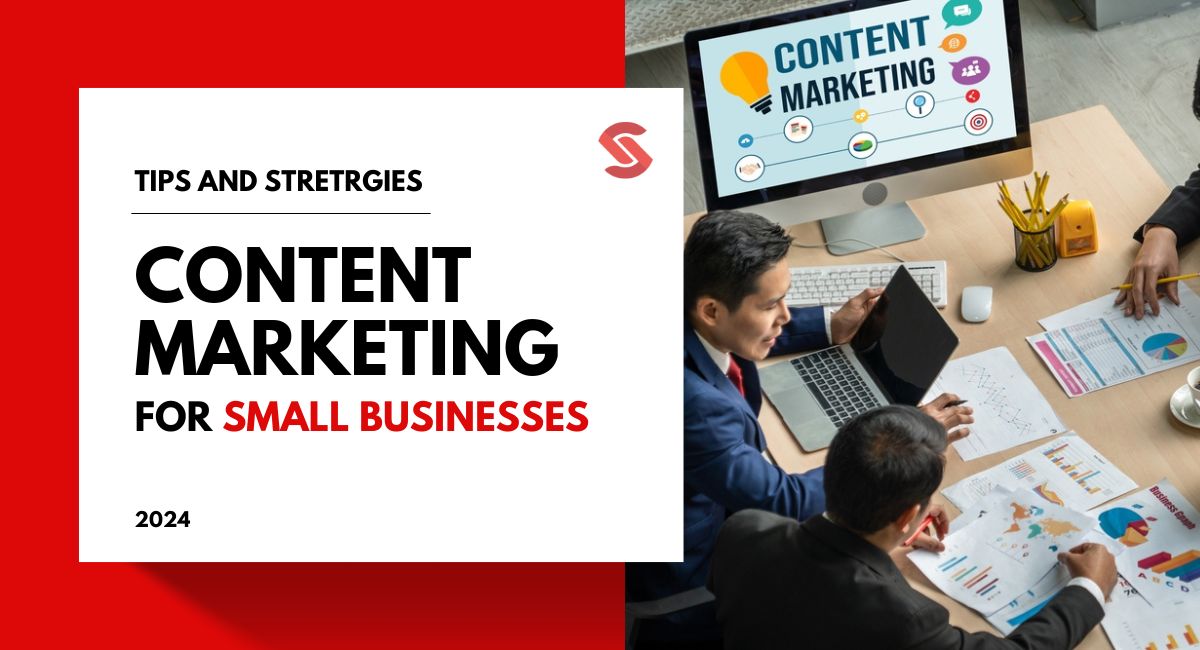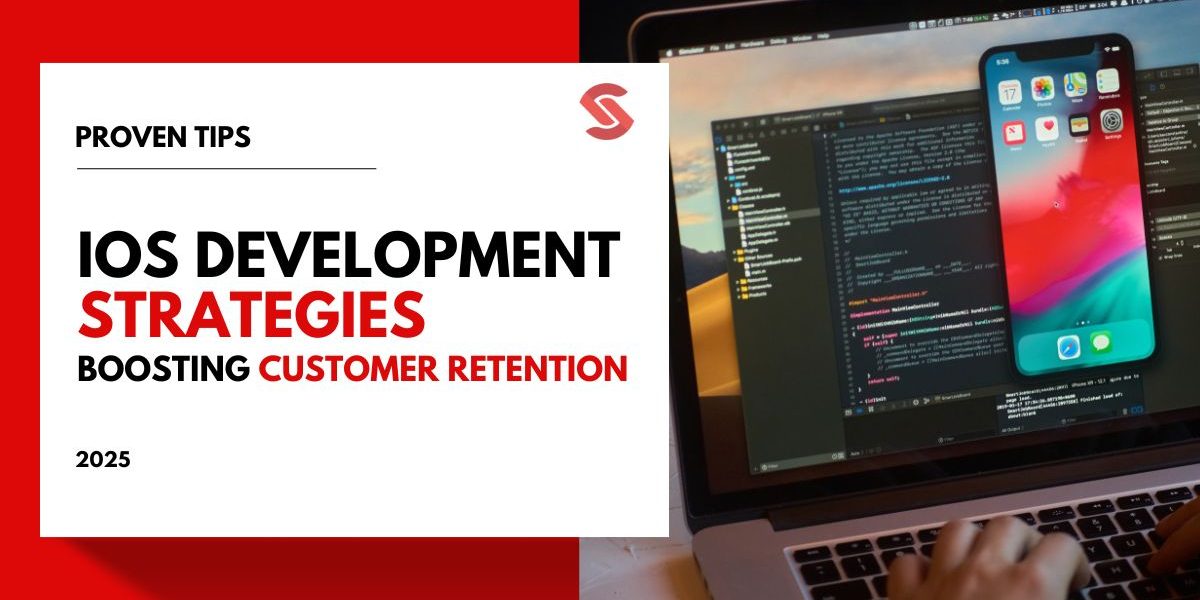The internet captures over six hours of an average person’s day, serving as a prime venue for digital interaction and content consumption. For small businesses, understanding and implementing effective content marketing strategies is crucial to tap into this vast audience.
This blog is all about important tactics of content marketing, emphasizing how it boosts brand awareness, enhances SEO, and improves audience engagement. We will provide small business owners with practical tips and insights on utilizing content marketing to its full potential, covering everything from creating engaging content to optimizing it for better digital visibility.
What is Content Marketing?

Content marketing is a strategic approach focused on creating and distributing valuable, relevant, and consistent content to attract and retain a clearly defined audience ultimately, to drive profitable customer action. Unlike traditional advertising, which often interrupts your experience, content marketing offers information that is genuinely useful or entertaining, fostering deeper customer engagement.
- 82% of marketers actively use content marketing.
- 70% of consumers prefer getting to know a company via articles rather than ads.
- It is a core component of digital marketing that emphasizes the importance of storytelling and personal branding through various types of media.
From blog posts and videos to infographics and podcasts, content marketing uses these and other mediums to connect brands directly with their customers without the hard sell. It’s about offering value through content writing services and insights that resonate with your target audience, enhancing your overall marketing techniques and brand presence.
Does My Small Business Need Content Marketing?
Content marketing offers a cost-effective advantage with significant long-term benefits, distinguishing it as a vital strategy for small businesses looking to optimize their marketing spend. This approach enhances brand visibility and fosters customer loyalty by engaging users with relevant and helpful information, rather than straightforward sales pitches. It allows your business to establish itself as the industry leader and creates a platform for ongoing customer interaction that builds trust and encourages repeat business.
- Content marketing costs 62% less than traditional marketing and generates about 3 times as many leads.
- Small businesses with blogs get 126% more lead growth than those without.
- 78% of consumers believe that organizations providing custom content are interested in building good relationships.
Investing in content marketing and SEO services can significantly boost your small business’s online presence, improving search engine rankings and attracting more organic traffic. This strategic investment not only increases your content marketing ROI but also establishes your brand as a trusted leader in your industry, cultivating a loyal customer base driven by value and trust.
11 Tips and Strategies for Content Marketing in Small Business

Creating the right mix in anything can help you to get the best results that is why developing the right strategies for content marketing strategies can revolutionize how small businesses connect with their audiences. These strategies include conducting thorough audience analysis to tailor your content effectively, setting clear objectives for each campaign, and using diverse content formats to keep your audience engaged.
Implementing an editorial calendar helps streamline the process, ensuring consistent content delivery that aligns with key business events and customer interests. By applying these focused tips, small businesses can create a robust content strategy that drives engagement and supports growth.
Audience Understanding and Engagement
Understanding and engaging your target audience is crucial for any small business aiming to maximize its digital marketing budget. By analyzing demographics and tracking behavior, businesses can create detailed buyer personas that guide personalized messaging. This approach ensures that content resonates deeply with different audience segments, enhancing engagement and conversion rates.
- 74% of consumers feel frustrated when website content is not personalized.
- Segmented email campaigns lead to a 760% increase in revenue.
- Personalization can lead to a five to eight times ROI on marketing spend.
- 80% of frequent shoppers only shop with brands that personalize their experience.
Using engagement metrics to evaluate the effectiveness of personalized content helps refine strategies further, ensuring resources are efficiently allocated. This focus on targeted, personalized content significantly boosts marketing efficacy.
Goal-Driven Content Strategies
Setting SMART (Specific, Measurable, Achievable, Relevant, Time-bound) goals is fundamental in content marketing to ensure that strategies align closely with your business objectives. This methodical approach helps small businesses focus their efforts on creating content that not only engages the target audience but also drives measurable outcomes.
- Goals should be specific enough to guide content creation and audience targeting.
- Measurable outcomes allow for tracking progress and adjusting strategies.
- Achievable goals ensure resources are not wasted on unattainable targets.
- Relevant objectives tie directly to business growth, influencing ROI positively.
By integrating these goals with detailed demographic analysis and behavior tracking, businesses can efficiently allocate their digital marketing budget, ensuring each content piece serves a specific purpose within their overall marketing framework. Aligning content strategies with these SMART goals directly contributes to the strategic success and ROI of digital marketing efforts.

Get More Leads with Effective Content Marketing
Blogging Essentials
Building a successful blogging strategy is about more than just writing posts; it requires thoughtful consideration of SEO best practices, blog frequency, and selecting content themes that resonate with your target audience. A well-planned blog enhances reader engagement by consistently delivering valuable and relevant content.
- Companies that blog receive 55% more website visitors.
- Blogs are rated as the 5th most trusted source for accurate online information.
- 61% of online consumers in the U.S. have made a purchase based on recommendations from a blog.
- Updating and republishing old blog posts with new content and images can increase organic traffic by as much as 106%.
Optimizing each post for SEO ensures that your blog will be more visible in search engine results, attracting more organic traffic. A strategic approach to blogging can significantly impact a small business’s digital presence and bottom line.
Effective Email Marketing
Using email newsletters effectively is a powerful strategy for maintaining customer interest and driving retention. Writing engaging content that resonates with your audience and managing your email list efficiently is crucial.
- Segmented campaigns can increase revenue by up to 760%.
- Email marketing has an average ROI of $42 for every $1 spent.
- Marketers who use segmented campaigns note as much as a 50% increase in open rates.
A well-designed email with a clear call-to-action (CTR) can significantly improve open rates and engagement. By focusing on curated content and robust list management, businesses can leverage email newsletters as a vital tool in their marketing arsenal.
Content Marketing on Social Platforms
Social media platforms are great options for content marketing and maximizing engagement through social media involves selecting the right platforms, tailoring content specifically for each, and interacting directly with followers to foster a vibrant community.
- 73% of marketers believe social media marketing has been “somewhat effective” or “very effective” for their business.
- Facebook continues to hold the largest user base, with over 2.8 billion monthly active users.
- Instagram posts with at least one hashtag average 12.6% more engagement.
- Tweets with images receive 150% more retweets than tweets without images.
- 54% of social browsers use social media to research products.
Understanding each platform’s unique environment and user expectations allows for more effective content adaptation and scheduling, which is essential for maintaining consistent user engagement. Implementing strategic engagement tactics on these platforms can significantly enhance visibility and foster deeper connections with customers. By reading a social media marketing guide for business, you can learn strategic engagement tactics to enhance visibility and deepen connections with customers on these platforms.
Organized Content Calendar

Using a content calendar is essential for streamlining content creation and ensuring consistent publishing across various platforms. It helps in organizing editorial planning, scheduling posts effectively, and tracking content performance. This strategic approach allows businesses to maintain a steady flow of content, ensuring that audiences remain engaged and informed. By using scheduling tools, small businesses can maximize their content’s impact, keep their strategy on track, and adapt quickly to new trends or insights.
Following New Content Trends
Extending the life of your content through repurposing is a smart way to maximize reach and efficiency. By transforming a single piece of content into multiple formats; like turning blog posts into infographics or podcasts, you can engage different audience segments on various platforms without the need for constantly creating new content.
- Content repurposing can increase reach by up to 400%.
- 65% of marketers use repurposing to generate new content.
- Blogs converted to podcasts can boost consumption by 23%.
- Videos on landing pages can increase conversions by over 86%.
- 80% of users interact more with content that includes visual elements.
- Infographics are shared 3 times more than other content types on social media.
Adapting content into various formats not only broadens your reach but also caters to different learning styles and preferences, making your marketing efforts more effective. This strategy enhances your content’s lifecycle and ensures your messages resonate across diverse media channels.
Content Marketing through Videos
Creating compelling video content is key to capturing your audience’s attention and boosting engagement. High-quality videos that incorporate good storytelling and clear messaging are more likely to be shared and remembered.
- Videos make up over 82% of all consumer internet traffic.
- 88% of video marketers report a positive ROI from video campaigns.
- Social video generates 1200% more shares than text and image content combined.
- Viewers retain 95% of a message when they watch it in a video compared to 10% when reading it in text.
Employing these video marketing strategies helps enhance the impact of your content and encourages wider dissemination among your target audience. By focusing on video production quality and viewer engagement, small businesses can effectively communicate their brand story and connect with their audience on a deeper level.
Utilizing User-Generated Content
Enhancing brand trust through user-generated content (UGC) is an effective strategy for small businesses. By encouraging and leveraging content created by your customers, such as testimonials and reviews, you provide authentic social proof that can boost credibility and attract new customers.
- UGC results in 29% higher web conversions than campaigns or websites without it.
- 70% of consumers will consider UGC reviews or ratings before making a purchasing decision.
- 92% of consumers trust non-paid recommendations more than any other type of advertising.
- User-generated videos on YouTube get 10 times more views than content created and uploaded by the actual brand.
- Brand engagement increases by 28% when consumers are exposed to both professional content and user-generated product videos.
These figures highlight the significant impact of incorporating UGC into your marketing efforts, building trust, and fostering a sense of community among users. Engaging with this content and showcasing it across your platforms also deepens community engagement and enriches your content strategy.
Content for Every Stage of the Sales Funnel

Creating content that resonates with audiences across the sales funnel is crucial for small businesses aiming to maximize their marketing efforts. At the awareness stage, where potential customers are just discovering a need or problem, content should focus on educational and informative pieces. Consideration content dives deeper, offering solutions and comparisons to guide prospects in their decision-making process.
- Awareness: Approximately 81% of shoppers conduct online research before making big purchases.
- Consideration: 63% of consumers actively seek out reviews and testimonials before deciding on a purchase.
- Decision-making: Personalized content can increase conversion rates by up to 20%.
- Buyer’s Journey: 75% of consumers are more likely to buy from a company that offers personalized recommendations.
- Content Personalization: Relevant content increases brand trust, with 78% of consumers believing that companies providing personalized content understand their needs better.
By tailoring content to meet the needs of buyers at each stage, small businesses can effectively guide prospects through the sales funnel, ultimately driving conversions and fostering long-term customer relationships. Finally, at the decision stage, content should be persuasive and action-oriented, nudging leads toward making a purchase.
Tracking and Analyzing Content Performance
To get the right impact of content across the sales funnel, tracking and analyzing performance metrics is essential for small businesses. Key indicators include engagement rates, conversion rates, and overall ROI. Engagement Rates: High engagement correlates with increased brand visibility and customer interaction.
- Conversion Rates: Tracking conversions reveals how effectively content leads to desired actions, such as purchases or sign-ups.
- ROI: Understanding the return on investment helps businesses assess the profitability of their content marketing efforts.
- Analytics Tools: Leveraging tools like Google Analytics offers detailed insights into website traffic, user demographics, and content performance.
Utilizing analytics tools such as Google Analytics or social media insights can provide valuable data on audience behavior and content effectiveness. By measuring content success through these metrics, small businesses can adapt their strategies to optimize performance and achieve their marketing goals.
Crafting High-Quality Content

High-quality content is the backbone of any brand which involves understanding user needs and delivering original, valuable information. Ensure accuracy and diversity in content to engage audiences effectively. Offer actionable tips and insights that address specific pain points, fostering trust and loyalty among your audience. Originality and relevance are key to crafting compelling content.
1. Addressing Customer Pain Points
Understanding and addressing customer pain points is vital for crafting high-quality content. Utilize methods like surveys and social listening to identify key issues. Create solution-based content that directly tackles these pain points, demonstrating empathy and understanding. By addressing customer concerns effectively, businesses can enhance customer satisfaction and loyalty, fostering long-term relationships.
2. Originality in Content
Crafting high-quality content necessitates prioritizing originality to differentiate yourself in the digital realm. By steering clear of plagiarism, you not only abide by copyright regulations but also bolster your SEO efforts by delivering unique value. Encourage creative brainstorming sessions and employ various techniques to foster innovation within your team, ensuring your content remains distinctive and compelling.
3. Creating Useful and Informative Content
Crafting truly valuable content involves going beyond surface-level information and providing practical advice that readers can immediately apply. Incorporate how-to guides, tutorials, and articles with step-by-step instructions to ensure informational depth. By offering useful and informative content, you establish credibility and trust with your audience, ultimately fostering engagement and loyalty.
4. Ensuring Content Accuracy
Ensuring content accuracy is crucial for maintaining credibility and trust with your audience. Fact-checking and verifying information before publishing are essential practices. Diversifying content formats such as videos, podcasts, and infographics not only expands your reach but also caters to different preferences within your audience, enhancing engagement and retention. By delivering accurate and varied content, you can effectively connect with and resonate with a broader spectrum of viewers.
5. Diversifying Content Formats
Diversifying content formats strategically targets diverse audience segments. Videos, podcasts, and infographics offer engaging alternatives to traditional written content, catering to varied preferences. This approach not only expands your reach but also enhances audience engagement and retention. By using multimedia content, you can effectively connect with different demographics and strengthen your overall content strategy.
6. Encouraging Action through Content
Encouraging action through content involves crafting compelling narratives and utilizing persuasive language to drive conversions. Incorporate strong calls-to-action (CTAs) strategically within your content to prompt reader engagement and motivate them to take the desired action. By offering actionable tips and employing effective engagement strategies, such as persuasive writing, businesses can effectively guide their audience toward conversion goals, maximizing the impact of their content marketing efforts.

Turn Users into Loyal Customers with Content Marketing
Final Thoughts
In conclusion, effective content marketing is crucial for small businesses seeking growth. By understanding audience needs, diversifying content formats, and prioritizing originality, brands can enhance visibility and foster loyalty. Implementing outlined growth strategies, such as setting SMART goals and utilizing user-generated content, can drive long-term success. Consistency and adaptability are key. By applying these final tips on content marketing, small businesses can maximize their online presence and achieve sustainable growth in today’s competitive market.
FAQs about Content Marketing
1. What does it mean by content marketing?
Content marketing is a strategic approach focused on creating and distributing valuable, relevant, and consistent content to attract and retain a clearly defined audience, ultimately driving profitable customer action.
2. Why is content marketing important?
Content marketing boosts brand awareness, enhances SEO, and improves audience engagement, leading to increased visibility and customer loyalty.
3. What are some benefits of content marketing?
Content marketing costs less than traditional marketing generates more leads and builds better relationships with consumers.
4. How can small businesses benefit from content marketing?
Small businesses can optimize their marketing spend, increase brand visibility, and attract more organic traffic by investing in content marketing.
5. What are some tips for effective content marketing?
Conduct thorough audience analysis, set clear objectives, and use diverse content formats to keep your audience engaged.
6. Why is audience understanding important in content marketing?
Understanding your target audience allows for personalized messaging, enhancing engagement and conversion rates.
7. What are SMART goals in content marketing?
SMART goals are specific, measurable, achievable, relevant, and time-bound objectives that align closely with business objectives.
8. How can small businesses create an effective blogging strategy?
Small businesses can enhance reader engagement by considering SEO best practices, blog frequency, and selecting relevant content themes.
9. What role does email marketing play in content marketing?
Email newsletters are effective for maintaining customer interest, driving retention, and increasing revenue when managed efficiently.
10. How can social media platforms be utilized for content marketing?
Social media platforms are great for maximizing engagement by tailoring content, interacting directly with followers, and implementing strategic engagement tactics.
11. Why is it important to track and analyze content performance?
Tracking and analyzing content performance help businesses optimize strategies, understand audience behavior, and achieve marketing goals effectively.
12. What are some key considerations for ensuring content accuracy?
Fact-checking, verifying information, and diversifying content formats are essential practices to maintain credibility and trust with the audience.






